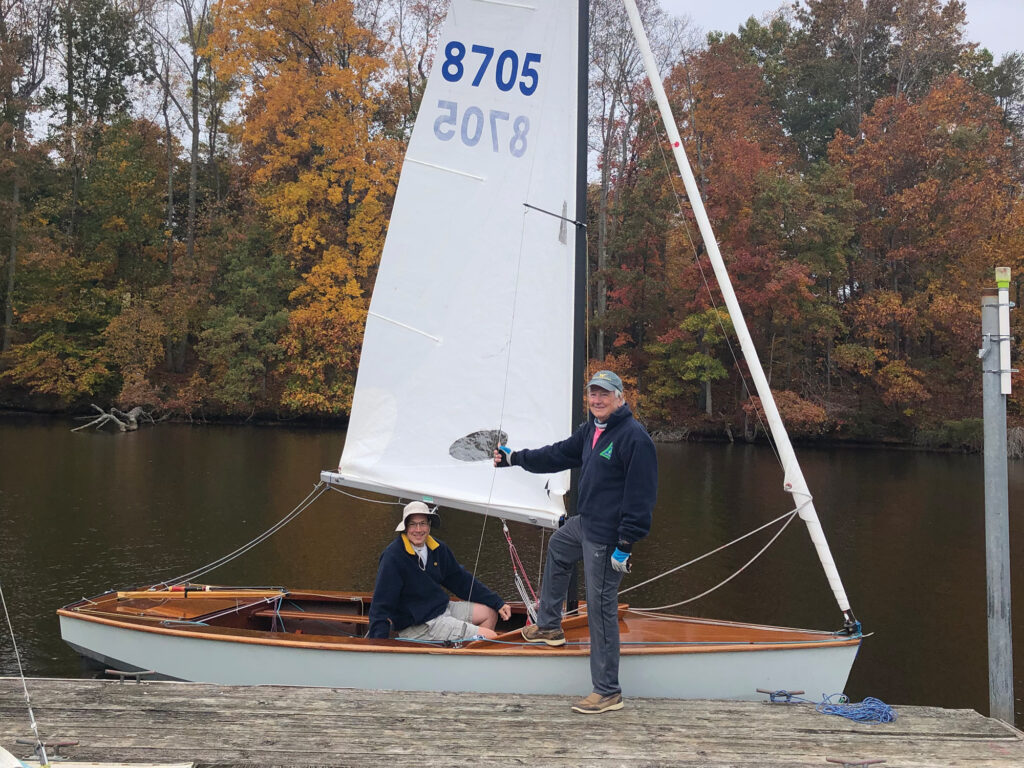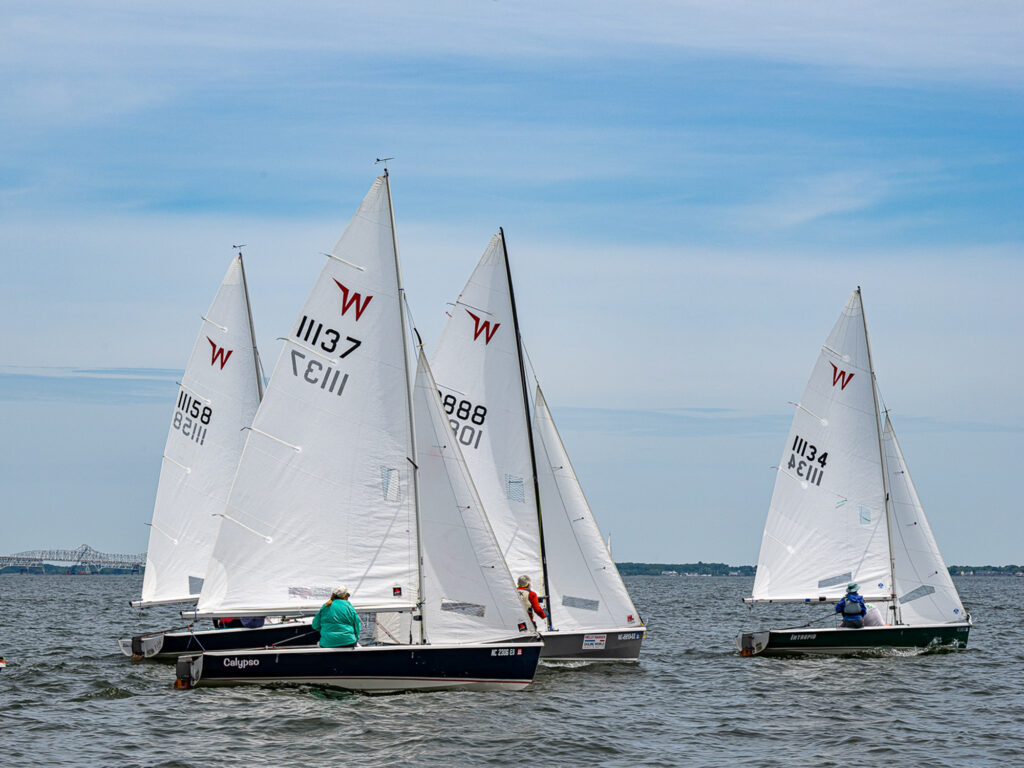
While in pre-flight training at Naval Air Station Pensacola, I had a classmate with sailing expertise that he’d gained at the US Naval Academy. He was always happy to share his passion for sailing with our cadet class, whether leading a hands-on lesson in a Penguin dinghy or aboard a Luders 44 wooden yawl. It didn’t take me long to be as hooked as a sailor as I was an aviator.
Upon returning to Michigan after serving in the Navy for many years, I found myself searching for a suitable sailing dinghy—something simple yet familiar. My search led me to a used wooden 16-foot Wayfarer dinghy, originally built from a kit. At the time, I was simply buying a boat, never thinking that I was also buying a lifetime of memories and friends. The dealer who sold me the boat promptly put me in touch with the local Wayfarer fleet, which welcomed my family of five. We soon joined this fun-loving group of sailors for their races, cruises and, of course, regular social gatherings in Michigan and Ontario. The events were usually held at state or local parks with water access and camping facilities. While my sailing partner and I raced, someone from the fleet family watched over our young minnows as they played with others left ashore.
After racing, the entire family would then pile into the boat and cruise around with the other boats, usually with an ice-cream reward somewhere along the shore. We had joined an extended family who freely shared their dinghy expertise in rigging, safety, reefing and racing techniques. When winter closed in and the water got hard, downhill and cross-country skiing were the wintertime sports for most of us, while others sharpened their iceboat runners as the ice thickened.
After a move to North Carolina, we sold our family Wayfarer to a graduate student who had raced against us in his father’s boat. At the time, I figured I’d never see the boat again, but today, some 40 years later, we still hear from him, and it brings me great joy to know that he continues to sail Wayfarer No. 611 in the waters of Maine and Massachusetts. The longevity of these old boats is incredible.

When we shifted to saltwater sailing on the North Carolina coast, my family took to a 16-foot catamaran and later a 36-foot ketch. Sailing was adventure for our boys, as well as for our grandchildren years later, who have all become proficient on our various watercraft. A cruise to Cape Lookout, chasing dolphins, or flying a hull on Bogue Sound have been highlights during the school years.
As is bound to happen, the boys grew up and scattered. In 2005, it was time for my wife, Linda, and me to find a dinghy suitable to our retirement age and sailing goals. A sad phone call pulled us back into the Wayfarer community when a Michigan fleet sailor notified me that two of our sailing friends had been seriously injured in a Florida boat-ramp accident. There was a regatta scheduled nearby, so I drove over and reconnected with many friends, sharing our best sailing stories, remembering lost fleet mates, and feeling again the tiller of a well-tuned small boat. So many years had passed, but the sensation of steering a Wayfarer came right back.
I evaluated all the various classes that were being raced on nearby lakes and ultimately decided the Wayfarer was still the right small craft for us. Fortunately, a Boy Scouts troop had taken on a project to rebuild a composite Wayfarer (with wooden decks and fiberglass hull), and we were able to acquire the boat. The wood was beautifully finished, and the hull sturdy enough to take the brunt of the occasional scrape on the oyster banks and sandbars prolific in our waters. Our Wayfarer tribe embraced us again, helping us renew our passion for the wind on our cheeks and to enjoy the camaraderie of those who dance on the water together.
Today, though, the experience is ever greater, sharing the helm and crew duties in a lively dinghy with grandchildren and watching them work to windward through the gusts with confidence and spunk—a metaphor for life.
Nonsailors often ask me about the scary moments “out there.” While there are frightening moments from time to time, the worst was a capsize with my featherweight granddaughter, Claire, who was crewing for me at a North American Championship on Lake Ontario. We went over quickly during a jibe, with winds pushing 20 knots and 4-foot seas. We’d handled similar jibes in earlier races, but at this moment, we were tired yet thrilled to be surfing toward the finish. At the time, I was thinking it would be wiser to chicken jibe, but we went for the jibe anyway. Claire slipped into the water, under the boom and sail, while I was falling across the boat. I lost sight of her, which was a terrifying moment, before her PFD brought her up smartly and into view as the boat turned turtle. Next time, we’ll chicken.
The Wayfarer class has matured to a point where international championships rotate among a few countries, providing us with an even larger extended family in the Netherlands, Denmark, England and Ireland. The locals usually find us loaner boats and interesting lodging, my favorite being a converted canal barge that once hauled wheat and aggregates throughout Friesland.
My favorite Wayfarer sailing now begins when I rig the sheets, set up the tiller tamer, set the board at half-depth, and slip away alone in a gentle breeze on a quiet inland sound. Mullet, stingrays and baitfish scurry away, believing that the Wayfarer is a predator looking for breakfast. An island with an active shorebird rookery is the destination to silently observe herons, egrets, pelicans and the elusive oyster-catchers. As the sea breeze strengthens and the tide ebbs, it is time to harden up, stay clear of the shallows, and return to the mooring buoy, where the boat will sit until the next race. My Wayfarer, like the old family wagon, is truly a vessel with many purposes.









